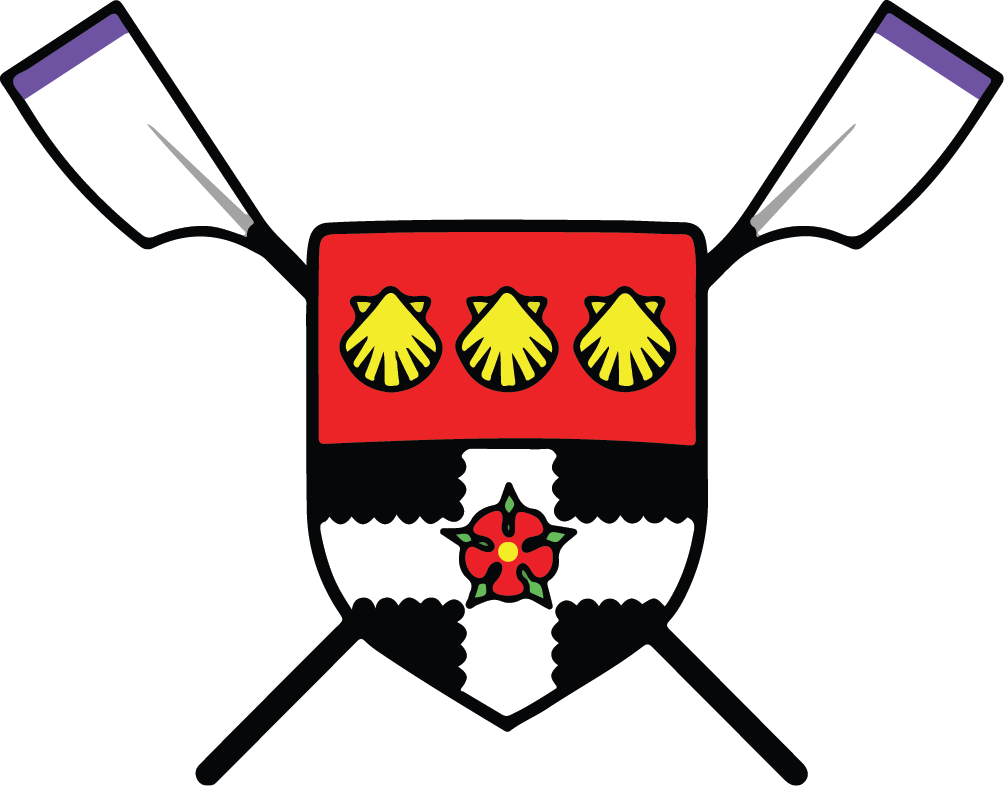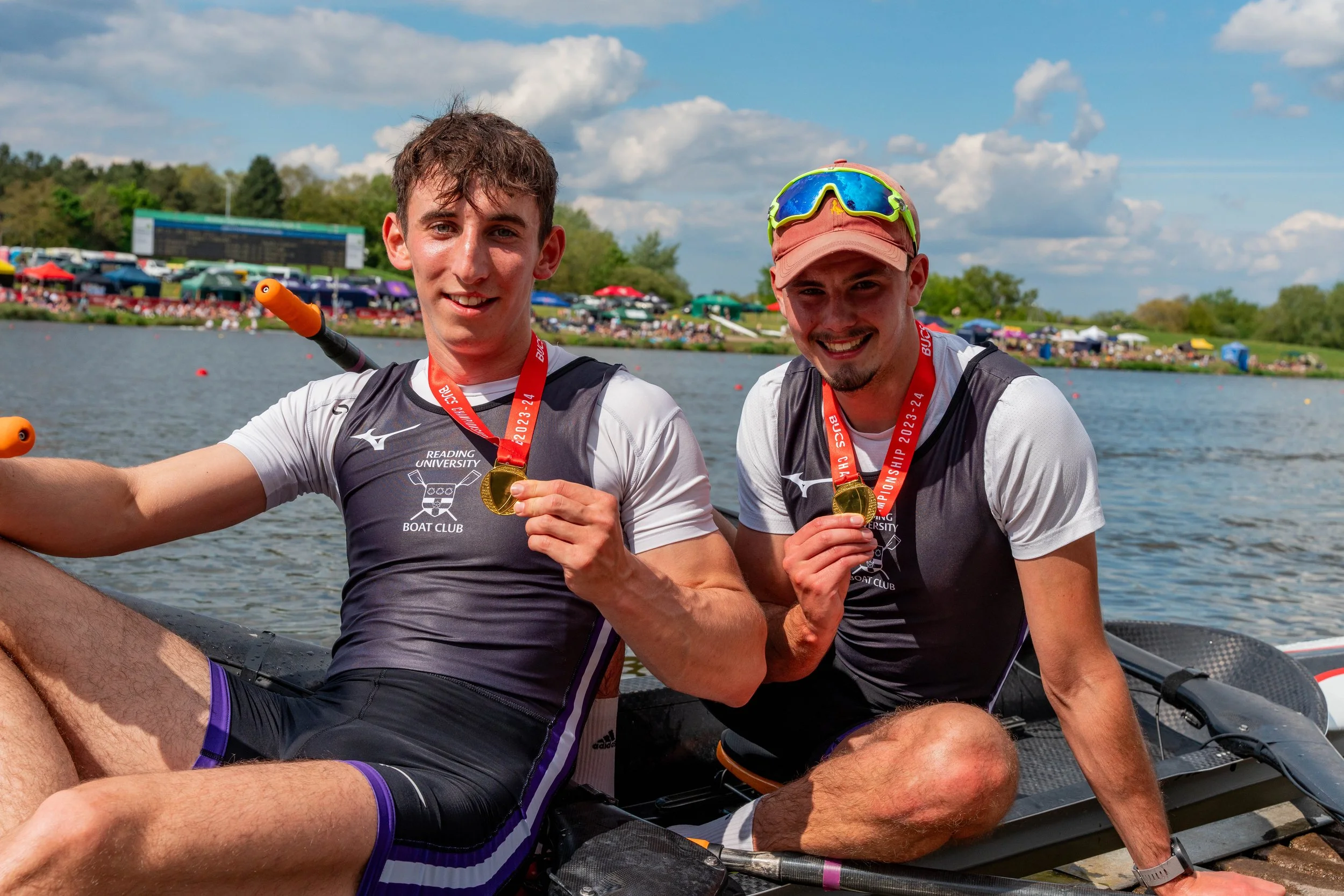Telemetry low down - with Chris Bartley
Chris setting up Josh’s single
Chris Bartley - The olympic silver medalist, turned coach, has a real eye for detail. This season he’s been playing with telemetry and how to make crews go faster. We caught up with him to find out more.
Basically, what is telemetry apart from a load of wires?
At RUBC we run a Peach telemetry system, which consists very basically of a sensor at each oarlock, and cables and junction boxes at each rigger. These are all connected to a logger which records all the data collected during a session: force and angle at each pin, boat acceleration and boat speed. We also have rower displays showing various metrics in real time. The full system allows us to record data for every stroke of a rowing session to be assessed during or after.
What made you want to try telemetry this season?
As a coach, I’m very data driven. Our programme is delivered online through an analysis platform, and we encourage our rowers to track all their training to help inform future decisions around the programme. Being able to track on water training output and progress in boat was the next step to help form a more complete picture of our rowers’ performances. Having immediate feedback on technical, rig, setup, and intensity changes I know from my own experience is very useful for getting a final percent or two out of our crews.
Isn’t there just too much data?
Having information on every stroke of every session for some of our crews does generate a lot of data. I have a fair bit of experience of how to assess the information, and how to share it, and we’ve developed quite a quick way of displaying the information in a way that is hopefully easy for everyone to understand.
“Having such great feedback can shortcut the time it takes to make a technical change”
Does it take long to set up?
All three of our coaches, and some of the rowers, are experienced at fitting and swapping the system between boats. At BUCS regatta we recorded information from both Men’s and Women’s Championship 1xs, 2xs and 4xs during the busiest regatta schedule of the season. We can probably fit a 4x set in about an hour.
What do you share with the rowers?
We share all the information generated with all of our athletes. I’ll tend to coach a few basic themes that are common across our whole group, and I feel that having access to what these changes look like in a telemetry report can be valuable for those who perhaps haven’t rowed with the system yet, as well as those involved in the session.
Where does the athlete see the benefit?
Some of the benefits are quite obvious and direct from an athlete’s point of view. If the target is to row a longer catch arc, the rower can quickly see in the boat (using a display screen) if a change has been made. Having such great feedback can shortcut the time it takes to make a technical change, with faster improvements and faster boats as a result.
Ellie and Matt helping with set up
What’s the most useful aspect of the telemetry?
I think there are two things which are particularly useful. Immediate feedback in the boat for the rower holds them accountable for their own technique and output. We have a good idea of the parameters needed to scull boats fast, and the rower can quickly assess how close they are to these targets. Secondly, from a coaching perspective, I can quickly adjust setup and rig to suit the crew, event, or outcome we want and see immediately if it’s had the required effect. This has saved me a lot of time and guesswork in optimising setup.
How often do you use it?
The system is expensive, it’s £10,000 for a quad set, so we can’t have a setup on every boat (I can dream!). For every training session we do, a crew will have a telemetry set on so it’ll get used pretty much every day.
What are some common errors that telemetry can highlight, and how are they corrected?
Angle and timing discrepancies are very easy to see in the reports, and can be corrected through setup and coaching cues that follow the analysis. We often find that scullers are not completely symmetrical in how they apply force through the bow and strokesides. We’ve had some good success in addressing these adjustments with both S&C adjustments, and rig changes to the boat.
“a crew with a lower power could be faster than a crew producing more power”
Are more watts always better?
Average power measured at the pin can be a good predictor of boat speed, but a crew with a lower power could be faster than a crew producing more power. There are quite a few more variables we know to look for to inform how fast we think a crew or individual could be, but this comes with experience using the system and analysing the information.
How do watts on the ergo relate to the boat?
With a lot of recorded data on training and test ergos, and an ever increasing library of information of water training and races, I’ve got a good idea of the percentage range seen in an athlete’s ability to produce power on the water. For some rowers, I’m able to set on water training zone wattages and targets for racing. For various reasons, ergo power will usually be higher than the power we see on the water.
Matt and Josh winning gold at BUCS regatta with the help of more data



